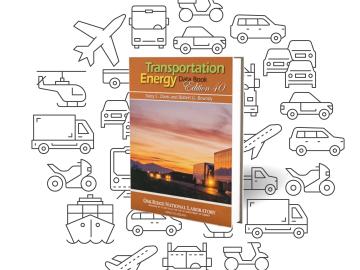
Filter News
Area of Research
- (-) Energy Science (101)
- (-) National Security (9)
- (-) Supercomputing (66)
- Advanced Manufacturing (5)
- Biology and Environment (26)
- Biology and Soft Matter (1)
- Computational Biology (1)
- Computational Engineering (1)
- Computer Science (2)
- Electricity and Smart Grid (1)
- Functional Materials for Energy (1)
- Fusion and Fission (10)
- Fusion Energy (3)
- Isotope Development and Production (1)
- Isotopes (2)
- Materials (113)
- Materials Characterization (1)
- Materials for Computing (20)
- Materials Under Extremes (1)
- Neutron Science (34)
- Nuclear Science and Technology (3)
- Transportation Systems (2)
News Topics
- (-) Chemical Sciences (16)
- (-) Materials Science (41)
- (-) Summit (44)
- (-) Transportation (72)
- 3-D Printing/Advanced Manufacturing (83)
- Advanced Reactors (8)
- Artificial Intelligence (50)
- Big Data (30)
- Bioenergy (31)
- Biology (22)
- Biomedical (22)
- Biotechnology (7)
- Buildings (39)
- Clean Water (8)
- Composites (17)
- Computer Science (116)
- Coronavirus (27)
- Critical Materials (12)
- Cybersecurity (28)
- Energy Storage (74)
- Environment (73)
- Exascale Computing (27)
- Fossil Energy (2)
- Frontier (32)
- Fusion (3)
- Grid (45)
- High-Performance Computing (46)
- Hydropower (3)
- Isotopes (2)
- Machine Learning (28)
- Materials (46)
- Mathematics (4)
- Mercury (3)
- Microelectronics (1)
- Microscopy (14)
- Molten Salt (1)
- Nanotechnology (15)
- National Security (38)
- Neutron Science (22)
- Nuclear Energy (14)
- Partnerships (16)
- Physics (9)
- Polymers (13)
- Quantum Computing (20)
- Quantum Science (27)
- Security (18)
- Simulation (18)
- Software (1)
- Space Exploration (6)
- Statistics (1)
Media Contacts

ORNL has been selected to lead an Energy Frontier Research Center, or EFRC, focused on polymer electrolytes for next-generation energy storage devices such as fuel cells and solid-state electric vehicle batteries.

Five technologies invented by scientists at the Department of Energy’s Oak Ridge National Laboratory have been selected for targeted investment through ORNL’s Technology Innovation Program.

Researchers at the Department of Energy’s Oak Ridge National Laboratory and their technologies have received seven 2022 R&D 100 Awards, plus special recognition for a battery-related green technology product.

Burak Ozpineci, a Corporate Fellow and section head for Vehicle and Mobility Systems Research at Oak Ridge National Laboratory, is one of six international recipients of the eighth Nagamori Award.

ORNL scientists will present new technologies available for licensing during the annual Technology Innovation Showcase. The event is 9 a.m. to 3 p.m. Thursday, June 16, at the Manufacturing Demonstration Facility at ORNL’s Hardin Valley campus.

What’s getting Jim Szybist fired up these days? It’s the opportunity to apply his years of alternative fuel combustion and thermodynamics research to the challenge of cleaning up the hard-to-decarbonize, heavy-duty mobility sector — from airplanes to locomotives to ships and massive farm combines.

It’s been referenced in Popular Science and Newsweek, cited in the Economic Report of the President, and used by agencies to create countless federal regulations.

ORNL researchers used the nation’s fastest supercomputer to map the molecular vibrations of an important but little-studied uranium compound produced during the nuclear fuel cycle for results that could lead to a cleaner, safer world.

Oak Ridge National Laboratory researchers determined that for every 5 miles per hour that drivers travel over a 50-mph speed limit, fuel economy decreases by 7% and equates to paying an extra 28 cents per gallon at current.

A study led by researchers at ORNL could help make materials design as customizable as point-and-click.


